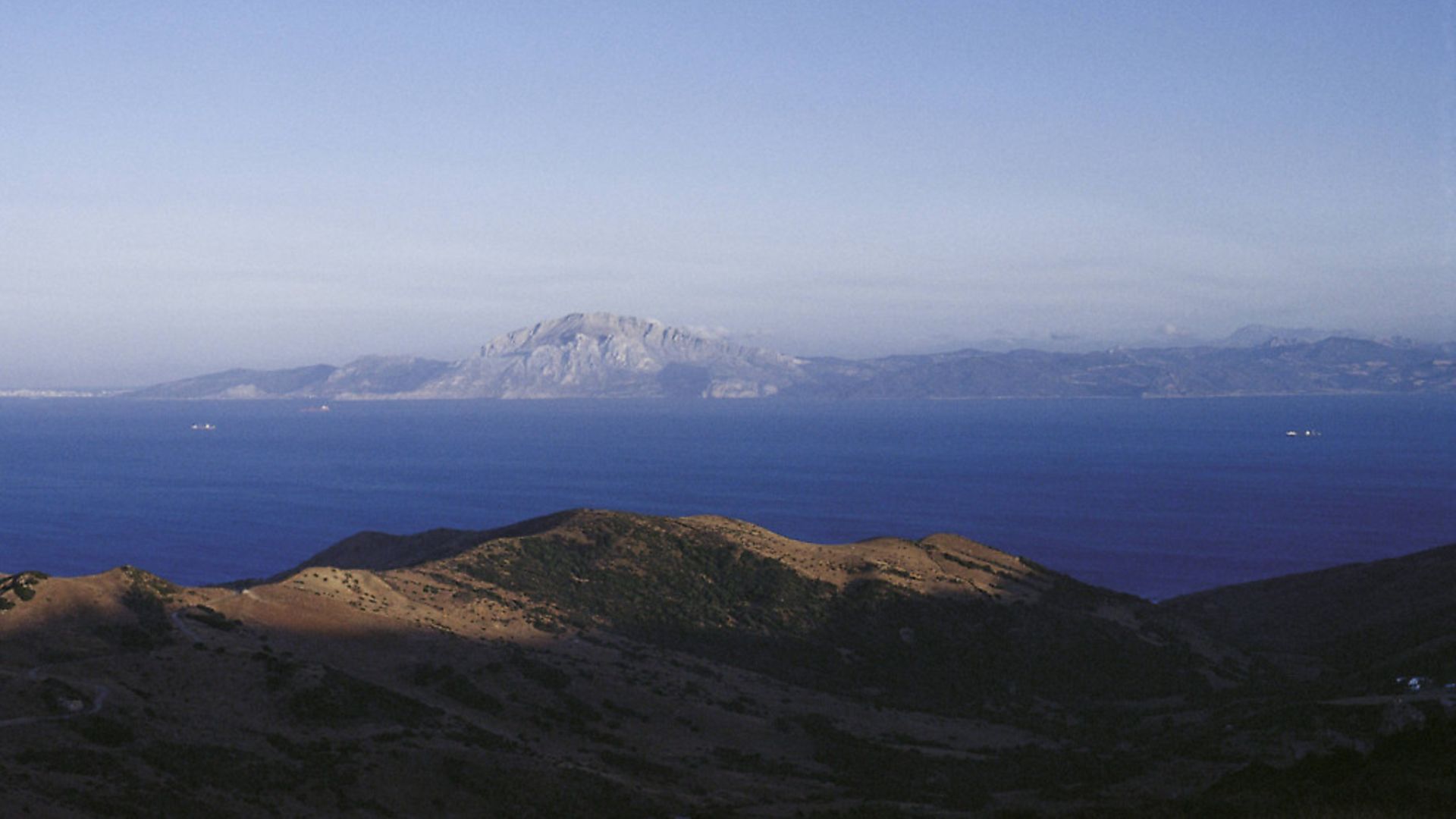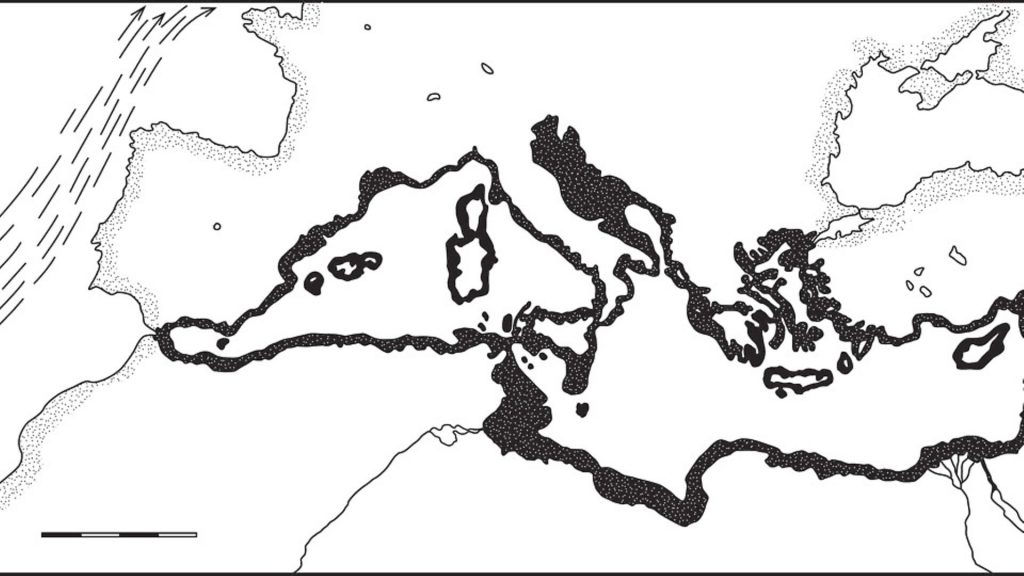
His long-forgotten scheme to drain the Mediterranean now sounds absurd. But at least Herman Sörgel raised some of the right questions. ROGER DOMENEGHETTI dredges up one of history’s most extraordinary chapters.

When Boris Johnson proposed a bridge linking Scotland to Northern Ireland as a symbolic way of keeping Britain linked to Europe, he was widely derided. Just about technically possible, it would be financially prohibitive.
In terms of scale and ambition, however, it paled in comparison with the serious suggestion proposed by Bavarian architect Herman Sörgel in the early 20th century. His vision – to partially drain the Mediterranean Sea, no less, in the process creating a Eurafrican super continent.
The central part of Sörgel’s plan, which first appeared in a Spanish newspaper article in 1928, was a huge 21-mile hydro-electric dam across the Strait of Gibraltar, separating the Mediterranean from the Atlantic Ocean.
Several other smaller dams would also be constructed at the Black Sea and Suez canal.
Sörgel argued that the dams would provide enough hydro-electricity to give Europe all the power it needed and, without the water flowing in to Mediterranean, progressive natural evaporation would eventually create an extra 357,900 square miles of new land. A third dam would subsequently be built between Sicily and Tunisia, splitting the Mediterranean into two separate basins and providing a road bridge between Europe and Africa.
Sörgel, an avowed pacifist, had little faith in politicians, instead believing that technology could be harnessed to provide a radical solution to combat the economic and political turmoil afflicting Europe in the aftermath of the First World War. He believed that the cost of the project would mean no country would have the resources to invade their neighbours.
Furthermore, he argued that the level of cooperation required and potential benefits accrued would unite Europe in a common goal while the scale of the project would provide high levels of employment for decades to come. Once completed, an independent body would be in control, able to switch off the energy supply to any country that threatened the hard-earned peace.
Like others, Sörgel was also concerned about the world’s over-reliance on what were considered to be diminishing coal reserves and the climate change caused by the rapid rate of industrialisation in Europe. Such fears are not as recent as might be supposed. They were expressed as early as the 1860s, in particular by economist William Stanley Jevons in his book The Coal Question. They continued to influence and illuminate debates into the 20th century when some scientists and biologists expressed concern about the steady spread of the world’s deserts. The British forester Edward Stebbing regularly wrote and spoke about the threat of The Encroaching Sahara and what he believed were its man-made causes.
In the 1920s, the discovery of Saudi and North Sea oil was a decade or more into the future and the idea of nuclear energy would have seemed as fantastical as building a dam linking Gibraltar and Morocco does today. These concerns about a looming energy crisis coupled with advances in turbine technology and the conduction of electrical currents meant a particular focus was placed on the possibilities of hydro-electric power, dubbed ‘white coal’.
Thus Sörgel presented his plan, initially christened Panropa but more commonly known by its later name Atlantropa, as a solution to the problems of unemployment, over-population and the over-use of a limited supply of fossil fuels.
Like much thinking at the time, it was based on a colonialist world view. Sörgel often referred to Europe as ‘people without space’ and conversely Africa as ‘space without people’ and over time his plans developed to include the damming of the Congo and the creation of a huge lake he dubbed the ‘Congo Sea’. Lake Chad would be extended and hydro-electric plants built on both. The resulting water table rise would, Sörgel argued, create lush farmland.
More than anything, Sörgel also hoped that the creation of these two great lakes in the centre of the African continent would generate a more temperate environment which would make life more pleasant for European settlers. Thus the African continent its resources and even its climate were to be controlled and exploited by a united white Europe. The problems Sörgel purported to solve were European, not African, ones.
Born in 1885 to a family of architects, Sörgel said that the idea for Atlantropa came to him in 1927 as he was reading the work of his compatriot Otto Jessen, a professor of geography at the University of Tübingen. Jessen argued that the Mediterranean was an ‘evaporation sea’ whose water level was only maintained by inflow from the Atlantic Ocean through the Straits of Gibraltar.
If that was when the idea was born, it had been in gestation for several years. In the mid-1920s Sörgel had read the German translation of H. G. Well’s The Outline of History, a weighty tome which told the story of the Earth up to the First World War.
In particular Sörgel was inspired by a section titled ‘The Flooding of the Mediterranean Valley’ in which Wells argued that the Mediterranean had once been a couple of land-locked sea basins surrounded by great areas of verdant land with an agreeable climate. These ideas were the basis of Sörgel’s belief that significant tracts of land could be reclaimed through natural evaporation once the water supply to the Mediterranean was cut off.
Sörgel’s plan may now seem a bizarre flight of fancy, yet it was very much in line with contemporary thinking, albeit the most ambitious example. This was an era when both large-scale hydro engineering and public works projects were commonplace around the world. The Suez canal, which linked the Mediterranean and Red Seas and took a decade to construct, had been opened some 60 years earlier. When Sörgel first proposed his idea, the USA was planning the Hoover Dam. Stretching across the Black Canyon of the Colorado River, the dam, when it opened in 1936, was the largest concrete structure ever built and the world’s largest hydro-electric generating station, producing enough energy for eight million people.
While it was named after US president Herbert Hoover, it was part of the New Deal, a domestic investment programme instigated by his successor Franklin D. Roosevelt to combat unemployment and kick-start the economy after the Great Depression. Several other major dams and hydro-electricity facilities were built across the country as part of the same scheme.
At the same time in Europe, the Dutch were undertaking an ambitious land reclamation project which saw them build several polders in the Zuiderzee, a large shallow inlet off the North Sea. To facilitate this a series of dams were built, the longest being the 20-mile Afsluitdijk. In Germany, Adolf Hitler pledged to build 1,000km of autobahns every year. Just like the New Deal, the huge project, was designed to create jobs and stimulate an economy still recovering from recession and hyper-inflation.
Thus Sörgel’s vision was not dismissed as hubristic folly by his peers. Most criticism focused on its political, not technological viability and many of the leading architectural thinkers and practitioners of the time supported the idea. In 1931 Peter Behrens, one of the founding fathers of the modernist movement, submitted a design for a 400-metre tall skyscraper. Christened the Panropa Tower, it would stand next to the would-be Gibraltar dam acting as both an administrative centre and powerful symbol of the new continent. Along with Alexander Popp, Behrens submitted designs for Atlantropa National Park containing landscaped gardens, conservation areas and hotels.
Erich Mendelsohn offered to work on what would have been the newly emerged coast of Palestine. A pioneer of Art Deco architecture, Mendelsohn, was a German Jew who was forced to flee the Nazis in 1933. A few months before he left for England, he spoke in favour of Atlantropa in a speech he delivered in Zurich. Acknowledging the onset of globalisation, which he argued would create problems affecting ‘all peoples as one’, Mendelsohn argued that ‘great supra-national tasks’ were the answer. Sörgel even engaged in correspondence with Albert Einstein, who suggested some improvements to his plan.
Furthermore, Sörgel was a relentless publicist and kept his idea in the public consciousness for decades. In just four years after he first proposed his idea, the project featured in 450 magazine and journal articles in the German and Austrian press.
Over the following decades it would appear in thousands of articles, mainly in Europe. Sörgel published his own newspaper Atlantropa Mitteilungen, established the Atlantropa Institute in Munich and even produced poetry and a symphony and accompanying choral on the subject.
Sörgel was killed on Christmas Day 1952 in a hit-and-run accident as he was cycling to deliver a lecture in Munich. The road was supposedly ‘as straight as a die’ and the driver was never found, leading some of Sörgel’s supporters to claim he had been murdered by opponents of his plan. Atlantropa continued to be discussed beyond Sörgel’s death but ultimately lost its momentum.
In 1960 the Atlantropa Institute was disbanded. However, the idea lived on. Just two years later The Man in the High Castle was published. Written by the American science fiction writer Philip K. Dick, it was an alternate history in which the Nazis, victorious in the Second World War, had drained he Mediterranean to create farmland.
Another science fiction writer, Gene Roddenberry began his 1979 novelisation of Star Trek: The Motion Picture with his hero James T. Kirk on a break in Africa. The captain of the Starship Enterprise is staying near an old hydro-electric complex at Gibraltar created by the damming of the Mediterranean, which was reduced to little more than ‘a long, slender lake’.
Sörgel’s idea even made an appearance in a German physics exam in 2003. The paper talked of Atlantropa as if it was a contemporary project and asked students to calculate the lowering of the Mediterranean’s water level and also how much energy it would produce.
While the Atlantropa project is now a quirky footnote in history, an idea that no one seriously champions any more, it tells us that people have long been looking for solutions to the problems that remain at the heart of European geopolitics. Issues such as climate change and immigration which are subject to significant debate now were causing similar anxieties and provoking radical ideas a century ago.









